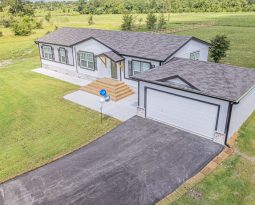Solving the Housing Crisis in the United States: The Rise of Factory-Built Housing
The United States is facing a severe housing crisis, with soaring prices, limited inventory, and millions of Americans struggling to afford decent housing. This crisis has far-reaching implications, affecting not only individual families but also the overall economy and societal well-being. Amidst this challenge, factory-built housing emerges as a promising solution, offering attainable homeownership, housing security, and avenues for wealth accumulation in the next decade.
The Housing Crisis in the United States:
The housing crisis in the United States has been exacerbated by various factors, including population growth, stagnant or slowly rising wages, zoning barriers, and a shortage of affordable housing units. According to the National Low Income Housing Coalition, there is a shortage of 7 million affordable owner available and otherwise available rental homes for extremely low-income renters in the U.S. Additionally, the median home price in the U.S. has surged to unprecedented levels, making homeownership increasingly difficult for many Americans.
Factory-Built Housing: One Solution for the Future:
Factory-built housing, also known as manufactured, prefabricated or modular housing, offers a compelling alternative to traditional site-built homes. These homes are constructed in an engineered factory-controlled environment, utilizing efficient production techniques and economies of scale. Factory-built housing encompasses a range of options, including modular homes, manufactured homes (built to the Federal HUD code), and prefabricated components.
Affordability:
One of the primary advantages of factory-built housing is its relative affordability. By purchasing in volume, streamlining the construction process and minimizing material waste, factory-built homes can be produced at a lower cost compared to traditional site-built homes. According to the Manufactured Housing Institute, the average cost per square foot for a manufactured home is significantly lower than that of a site-built home, making factory-built housing accessible to a broader segment of the population, making homeownership a possibility.
Speed of Construction:
Factory-built housing also offers faster construction timelines compared to traditional construction methods, thereby reducing the builders cost of capital. Since the components of these homes are assembled/constructed in a controlled factory environment, labor shortages, weather delays and other on-site obstacles are minimized. As a result, factory-built homes can be constructed in a matter of weeks rather than months, addressing the urgent need for housing in communities across the country.
Quality and Customization:
Contrary to common misconceptions, factory-built housing offers high-quality construction and a wide range of customization options. Modern manufacturing techniques ensure precision, consistency and structural strength in the construction process, resulting in durable and energy-efficient homes. Furthermore, factory-built homes offer many options allowing the home to be customized to meet the unique preferences and needs of homebuyers – offering flexibility in design and layout.
Sustainable and Innovative:
Factory-built housing aligns with sustainability goals by reducing construction waste, optimizing energy efficiency, and incorporating eco-friendly materials. Moreover, advancements in technology and design have led to innovative solutions in factory-built housing, such as net-zero energy homes and resilient building materials. These innovations not only benefit the environment but also enhance the long-term value and appreciation of factory-built homes.
The Path Forward:
As the United States grapples with the housing crisis and the confluence of policymakers, developers, and communities, we must recognize the potential of factory-built housing as one of the viable solutions. Initiatives such as zoning reform, financial incentives, and public-private partnerships can facilitate the widespread adoption of factory-built housing and promote housing attainability and accessibility for more Americans. By embracing innovation and collaboration, we can build a future where attainable homeownership, housing security, and wealth accumulation are within reach for more.
Conclusion:
The housing crisis in the United States demands continued bold and innovative solutions, and factory-built housing emerges as a promising pathway towards addressing this challenge. By leveraging the affordability, speed, quality, and sustainability of factory-built housing, we can create a more equitable and resilient housing landscape for generations to come. And we can deliver TODAY.
Sources:
National Low Income Housing Coalition. (2023). The Gap: A Shortage of Affordable Homes. Retrieved from https://reports.nlihc.org/gap
Manufactured Housing Institute. (2022). The Facts About Manufactured Housing. Retrieved from https://www.manufacturedhousing.org/wp-content/uploads/2022/03/Facts-about-Manufactured-Housing-2022.pdf







